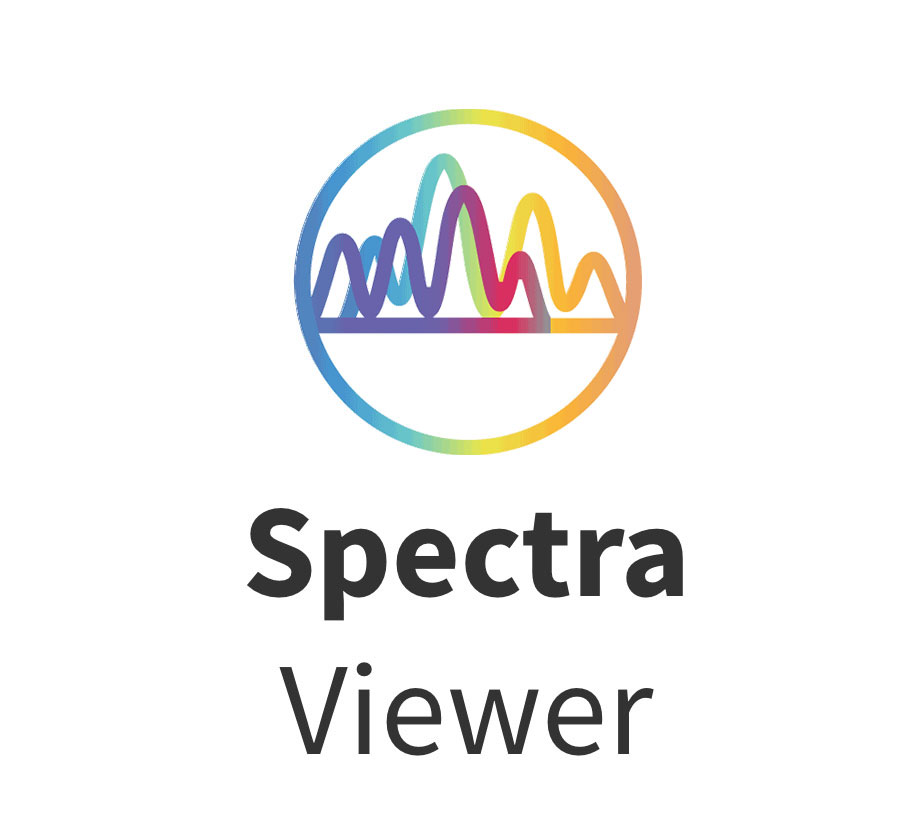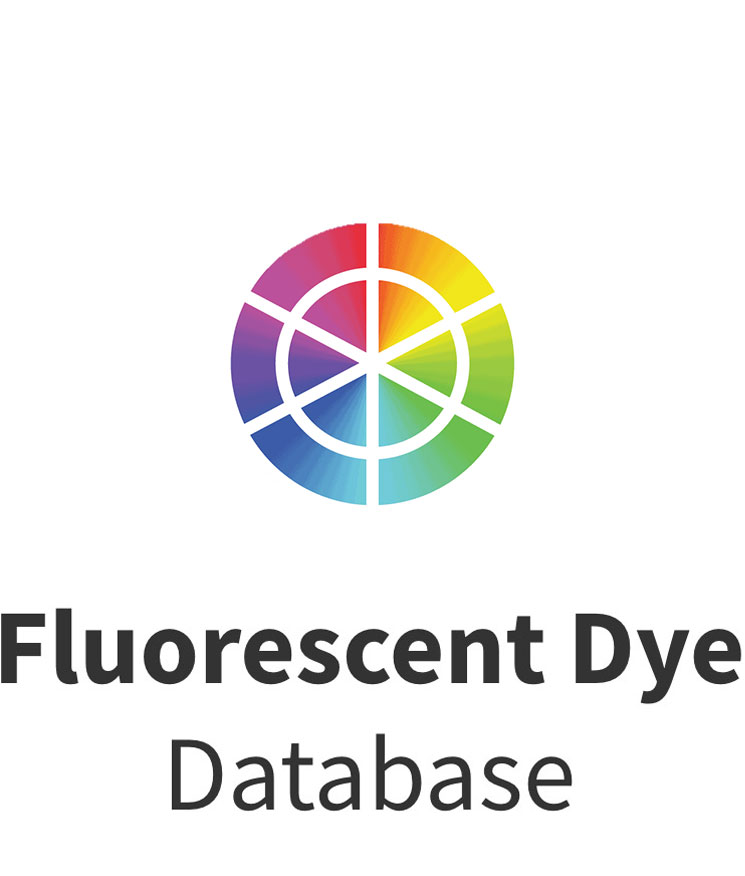There is light inside our cells. Each cell relies upon a unique array of vitamins, metabolic cofactors ,and aromatic amino acid-based proteins. Many of these molecules exhibit unique fluorescent properties, collectively known as endogenous autofluorescence. The smallest organic fluorophores, like coumarin or Alexa Fluor 350, conjugated to antibodies for use in cell analysis applications also have the shortest excitation wavelength. Because these fluorophores are so small, they have very limited potential to absorb energy and low quantum efficiency, and thus are very dim in application.
 Nature doesn’t build large autofluorescent molecules, which is why the excitation range of most autofluorescent molecules is 250-400nm. For example, protein quantification of a solution relies on the absorbance of the protein at 280nm. In flow cytometry, excitation sources shorter than 355nm UV range are not largely adopted due to the potential differential interference of proteins absorbing energy at shorter wavelengths. While autofluorescence in this range may be dim at the level of individual molecules, it becomes significant due to the abundant expression within each cell. This can compromise sensitivity in tissue, such as endogenous collage, elastin, flavin-based cofactors, vitamins, lipids, and porphyrins. An amazing paper that seeks to characterize these common single sources of cellular autofluorescence and their impact on background associated with fluorescence imaging is from Anna Cleta Croce and Giovanni Bottiroli in 2014 (1). Complementary to this, in 2024, Noel Case, Nikki Johnston and Jay Nadeau published a paper that seeks to characterize organic material and microorganisms by autofluorescence in soil and rock… from space (2).
Nature doesn’t build large autofluorescent molecules, which is why the excitation range of most autofluorescent molecules is 250-400nm. For example, protein quantification of a solution relies on the absorbance of the protein at 280nm. In flow cytometry, excitation sources shorter than 355nm UV range are not largely adopted due to the potential differential interference of proteins absorbing energy at shorter wavelengths. While autofluorescence in this range may be dim at the level of individual molecules, it becomes significant due to the abundant expression within each cell. This can compromise sensitivity in tissue, such as endogenous collage, elastin, flavin-based cofactors, vitamins, lipids, and porphyrins. An amazing paper that seeks to characterize these common single sources of cellular autofluorescence and their impact on background associated with fluorescence imaging is from Anna Cleta Croce and Giovanni Bottiroli in 2014 (1). Complementary to this, in 2024, Noel Case, Nikki Johnston and Jay Nadeau published a paper that seeks to characterize organic material and microorganisms by autofluorescence in soil and rock… from space (2).
Back on earth, in flow cytometry, autofluorescence has historically been an average of all the single source components within a heterogenous cell sample. It would present as a higher threshold of signal omnipresent in a cell subset. Any specific antibody-mediated signal would need to surpass this elevated threshold to be sensitively detected. In short, it was seen as a nuisance to the task of accurately gating cell populations. However, with the adoption of spectral flow cytometry platforms, all this valuable information about cell health and function represented by the changing composition of single autofluorescent molecules is now accessible for analysis. Check out these publications in Cytometry Part A, the first from Kate Pilkington (3) and the second from Vanta Jameson (4), both which give a good description of the issues and potential of autofluorescence in spectral flow cytometry thus far.
When spectral flow cytometers were first introduced, they initially only allowed users to fingerprint the spectral signature of the averaged multi-source autofluorescence within a given channel. This signature could then be labeled as a new “fluorophore” (e.g., the autofluorescence of monocytes) in order to unmix or subtract autofluorescence from other fluorophores present in a stained sample. However, flow cytometry is a single cell technology, and applying an average derived from thousands of cells to any single cell creates inconsistency, especially if the source of autofluorescence itself varies widely. For example, if a cell is in active division, it might have a disproportionate concentration of NADH/NADPH and vitamins like riboflavin and more protein and organelle synthesis as compared to cells that have terminally differentiated. In short, two cells of the same cell subsetting marker phenotype will not contain the same ratio of light-producing molecules and thus their autofluorescent spectral signatures will not match. This results in spectral unmixing errors rife within the 420-550nm emission range of the 355nm UV or 405nm violet lasers.
Also, even more importantly, we have no idea the depth of the value of the biological information that these spectral changes might represent. Just as an example, the value of flow cytometry, in this context, would be to non-invasively relate the concentration of say riboflavin to cell cycle arrest or senescence, possibly even before or instead of using other traditional protein-based proliferation markers like Ki-67 or invasive probes like CFDA-SE (CFSE). If we can characterize single source molecules, there may be a non-invasive way of drawing relationships and conclusions about cell function in cell types and applications where exogenous treatment is undesirable, like stem cells. To acknowledge the value of these biological building blocks is to unleash the true power of spectral flow cytometry.
Cytek has recently released a new tool called the AF Explorer to help unmix multiple single source autofluorescent signatures derived from raw unstained cell samples. Each manufacturer is in pursuit of similar, user-friendly tools for the same purpose. The first step is the ability to gate populations within a raw unstained cell sample, based on the channel combinations of their unique autofluorescent spectral emission peaks. For example, as of now, we may not be able to employ NADH or FAD-specific single color unmixing controls. However, NADH is excited by the UV but not 405nm laser. By creating a bivariate plot of the raw unstained control with UV3 (peak NADH emission) versus V2 (peak FAD emission, but no NADH emission), we can extract a subset of cells that contain spectral signatures enriched in either NADH or FAD emission. Subsequently, as newly minted single color unmixing controls, they contribute to more accurate and flexible autofluorescence unmixing adaptable to changes in their individual concentration. As a community, we are just beginning to understand and effectively utilize all the strengths and possibilities of spectral flow cytometry.
Here at FluoroFinder, we are in the pursuit of creating tools that help researchers plan assays and build flow cytometry panels. Being able to predict spectral emission ranges where autofluorescence may impact the quality of data is important. We have an ongoing project to create an autofluorescence spectra viewer to better understand fluorophore selection when panel building. In the meantime, you can use our Spectra Viewer to visualize fluorophores in the context of your lab’s specific instrument configuration. If you are interested in joining the Autofluorescence Working Group team, please send a note to support@fluorofinder.com.
References
- Croce AC, Bottiroli G. Autofluorescence spectroscopy and imaging: a tool for biomedical research and diagnosis. Eur J Histochem. 2014 Dec 12;58(4):2461. doi: 10.4081/ejh.2014.2461. PMID: 25578980; PMCID: PMC4289852.
- Case N, Johnston N, Nadeau J. Fluorescence Microscopy with Deep UV, Near UV, and Visible Excitation for In Situ Detection of Microorganisms. Astrobiology. 2024 Mar;24(3):300-317. doi: 10.1089/ast.2023.0020. PMID: 38507693; PMCID: PMC10979697.
- Pilkington KR. Autofluorescence: From burden to benefit. Cytometry A. 2024;105(8):563-567. doi:10.1002/cyto.a.24885
- Jameson VJ, Luke T, Yan Y, Hind A, Evrard M, Man K, Mackay LK, Kallies A, Villadangos JA, McWilliam HEG, Perez-Gonzalez A. Unlocking autofluorescence in the era of full spectrum analysis: Implications for immunophenotype discovery projects. Cytometry A. 2022 Nov;101(11):922-941. doi: 10.1002/cyto.a.24555. Epub 2022 Apr 12. PMID: 35349225; PMCID: PMC9519814.





